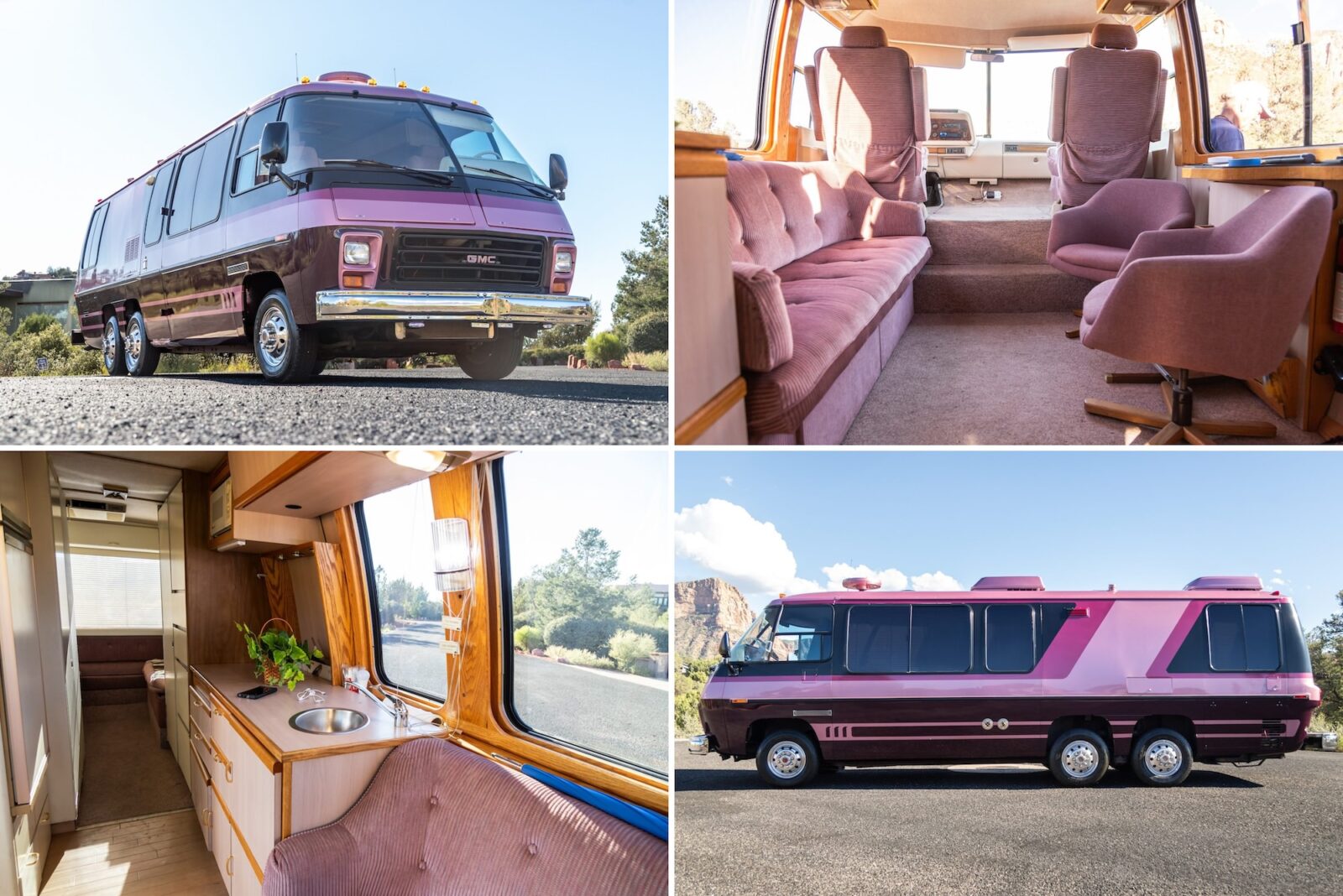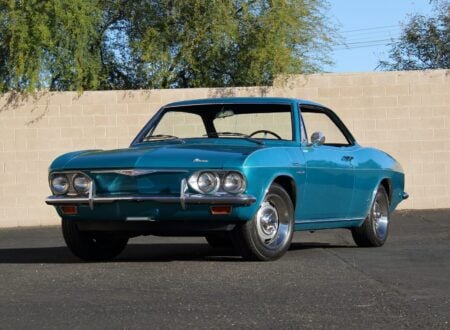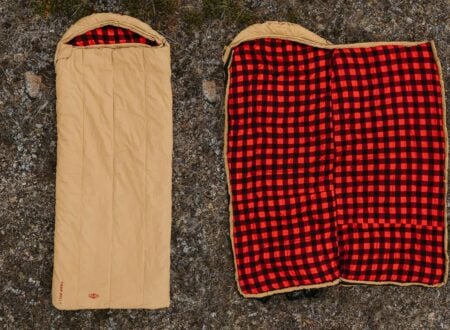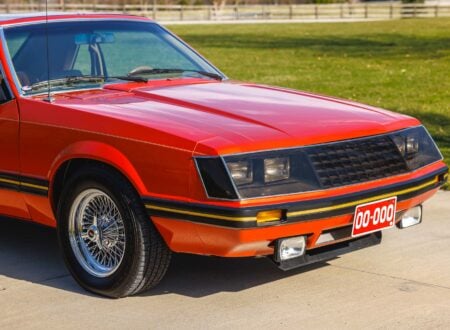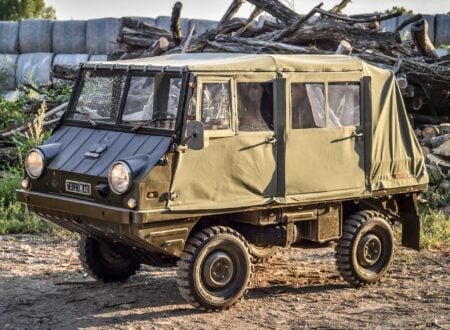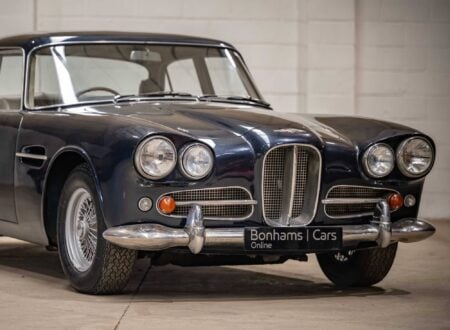This is a 1977 GMC Motorhome Eleganza II 26′, it was given an unusual pink, purple, and burgundy repaint years ago, and the interior was modified to suit. It’s now a retro-home-on-wheels, and it’s being offered for sale out of Arizona.
The GMC Motorhome was General Motors’ own foray into the high-end RV market, it was produced during the 1970s and the surviving examples are now much sought after by vintage motorhome enthusiasts due to the build quality.
Fast Facts: The GMC Motorhome
- This 1977 GMC Eleganza II is a long-owned 26-foot Motorhome that now wears a distinctive pink, purple, and burgundy repaint over its aluminum and fiberglass body. It sits on a front-wheel-drive layout with Oldsmobile V8 power, a three-speed automatic, and a low-floor design that was advanced for its time.
- The seller’s family has kept it since 1980, and it now carries updates including dual roof A/C units, solar panels feeding a Trace inverter, exterior lighting additions, and fresh rear suspension work with new air bags and Koni shock absorbers. It rides on six 16.5 inch wheels with Michelin XPS Rib tires.
- Inside, the cabin has a retro pink theme with corded upholstery, woodgrain trim, and two captain’s chairs. The lounge area offers a sofa, swiveling armchairs, a folding dinette, custom White American Oak cabinetry, and motion-activated lighting. Amenities include a Bluetooth Alpine stereo, dual climate units, and a folding table.
- The rear bedroom features side-facing settees behind a kitchenette with a sink, stove, microwave, fridge, and closet. Opposite sits a wet bath with a toilet, shower, and sink. Mechanical updates include an aluminum radiator, dual exhaust with Super Turbo mufflers, an Onan generator, AGM batteries, and an odometer reading near 33,000 miles.
History Speedrun: The GMC Motorhome
The fascinating backstory of the GMC Motorhome began back in the late-1960s and early-1970s when General Motors executives saw an opportunity to capitalize on the fast-growing RV and motorhome market in the United States. Rather than building on a truck chassis as most recreational-vehicle (RV) makers did at the time, GM chose to design, engineer and build the coach from the ground up through its GMC Truck & Coach Division.
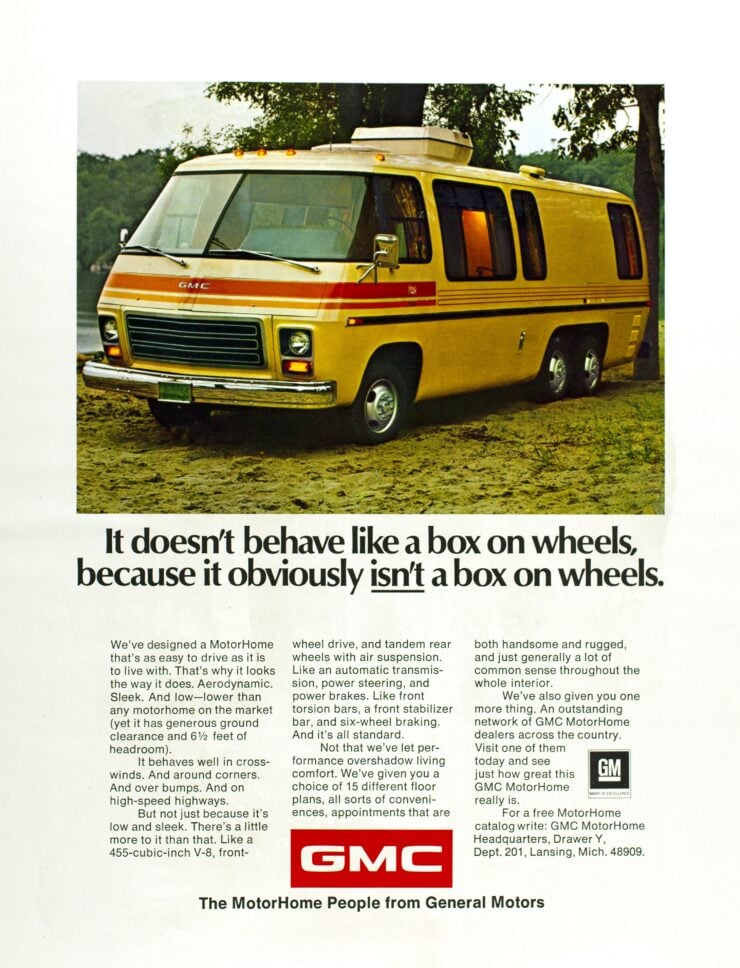

The project launched in earnest in 1970, with design work beginning in that year and the first prototypes appearing just two years later in 1972. One of the key objectives of the project was to build a motorhome that didn’t feel like a truck on the road – but handled more like a bus.
GM engineers opted for an unusual front-engine and front-wheel-drive layout using the Unitized Power Package derived from the Oldsmobile Toronado (455 cubic inch V8 paired with the TH425 automatic) so as to eliminate the driveshaft and rear axle typical of RVs of the time. This allowed for a much lower floor height, better ride quality, and better handling thanks to a lower center of gravity. The Motorhome was built on a welded steel ladder frame chassis, with an extruded-aluminum body frame with fiberglass and sheet-aluminum panels.
The GMC Motorhome debuted for the 1973 model year in two lengths – there was a 23 foot variant named the Model 230, and a 26 foot variant named the Model 260. Initially the interiors were outfitted by the Gemini Corporation in Mt. Clemens before being brought fully in-house at GM. Production was entirely at Pontiac, Michigan.
From its release, the GMC Motorhome offered a series of advanced features for its class, some of which were industry leading at the time. The front engine 455 cubic inch (7.5 liter) Oldsmobile “Rocket” V8 was good for 265 bhp in early models, but the real selling point was the torque, roughly 460 lb ft and enough to get the big rig moving up even the steepest hills.
For 1977 and beyond GM substituted the 403 cubic inch (6.6 liter) Oldsmobile V8. The transmission was the Turbo-Hydramatic 425 3-speed automatic, driving the front wheels via a wide-roller chain and half-shafts. The 23 ft version rode on a 140 inch wheelbase and the 26 ft on a 160 inch wheelbase. Width was 96 inches for both, and height was around 9 ft including roof A/C – interior head-room was 76 inches or 6.3 feet.
Total production of the GMC Motorhome came to 12,921 units over the six model years (1973 until 1978). Although GM introduced the vehicle amid high hopes – estimating strong RV sales growth – the 1973 oil crisis, rising fuel costs and shrinking V8 engine availability quickly undermined the business case for the motorhome. GM announced discontinuation on 11 November 1977 and wound production through the 1978 model year.
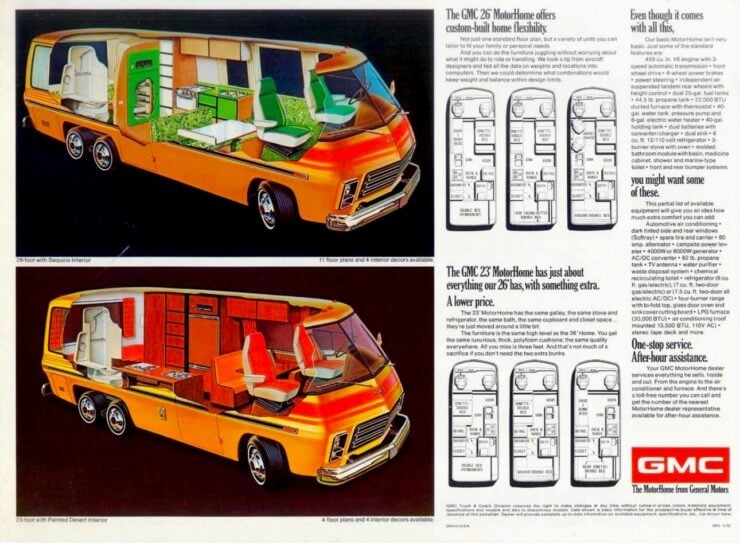

Though it was never a high-volume product, the GMC Motorhome earned a loyal following thanks to its engineering sophistication and its excellent build quality. Many remain in operation today, supported by active owner clubs and aftermarket parts suppliers. Its low floor, panoramic glass and car-like ride set it apart from conventional RVs of its era. Even today, the design remains admired among vintage-RV enthusiasts for its forward-thinking engineering.
The 1977 GMC Motorhome Eleganza II Shown Here
This 1977 GMC Eleganza II is a long-owned example that the seller’s family has kept since 1980 – an impressive 45 years. It was originally finished in standard GMC colors, but it now carries a custom pink, purple, and burgundy repaint over its aluminum and fiberglass body.
It has roof-mounted Dometic air-conditioning units with heat pumps, solar panels feeding a Trace inverter, and aftermarket auxiliary lighting round out the exterior updates. It rides on six 16.5 inch wheels fitted with older Michelin XPS Rib tires, and it rides on torsion-bar front suspension up front with all four rear wheels supported by a height-adjustable air system. Recent mechanical work included the fitment of new rear suspension air bags and Koni shock absorbers.
Braking is handled by front discs and rear drums, and chassis protection plates have been welded to the rear section of the frame. The cabin presents a period-themed pink interior with corded upholstery, woodgrain trim, and two captain’s chairs up front.
Amenities include a Bluetooth Alpine stereo, dual A/C, a heater, an alarm system, and a folding table. The lounge area adds a sofa, a folding dinette with swiveling armchairs, custom White American Oak cabinetry, and motion-activated lighting.
This Motorhome has a rear bedroom which is formed by side-facing settees that sits behind a kitchenette with a sink, stove, microwave, fridge, and tall closet. Opposite this is a wet bath with a toilet, shower, and sink. The stainless-steel water heater runs on electricity or engine heat, and the toilet seal and refrigerator have both received recent servicing work.
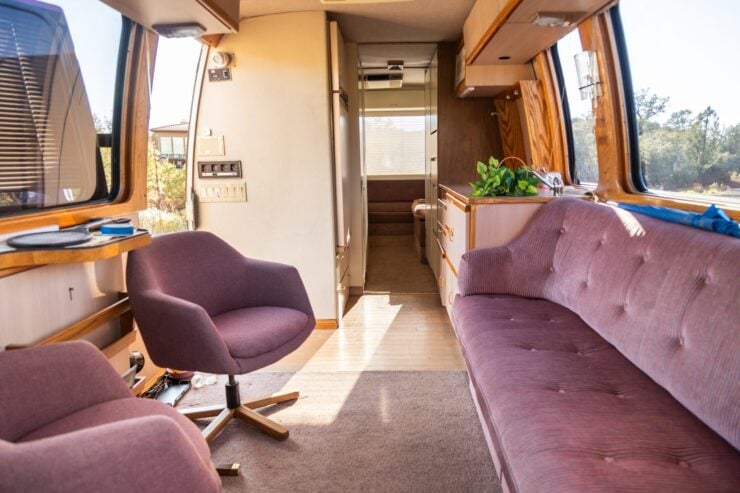

The engine is now equipped with an aluminum radiator, a Carter electronic knock eliminator, and a dual exhaust with Super Turbo mufflers. It also has an Onan 6,000 watt generator with approximately 762 hours on the clock, an auxiliary air compressor, and recently installed AGM batteries. The odometer shows just ~33,000 miles, surprisingly low for an RV.
It’s now being offered for sale out of Sedona, Arizona with a collection of vehicle literature, touch-up paint, and an Arizona title. If you’d like to read more or place a bid you can visit the listing here.
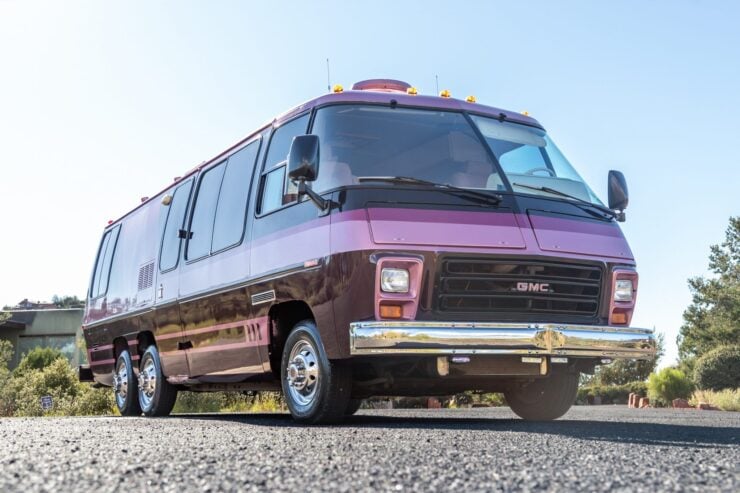


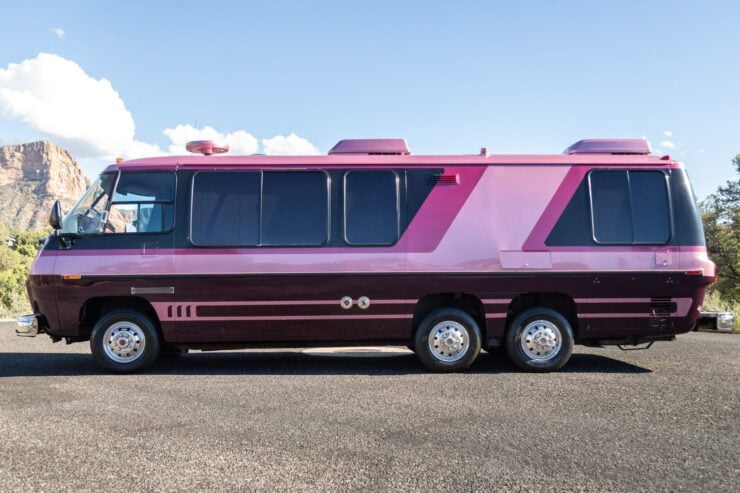

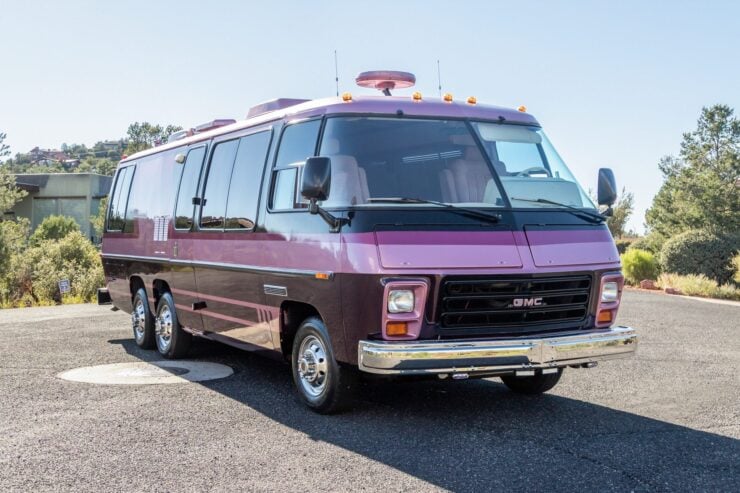
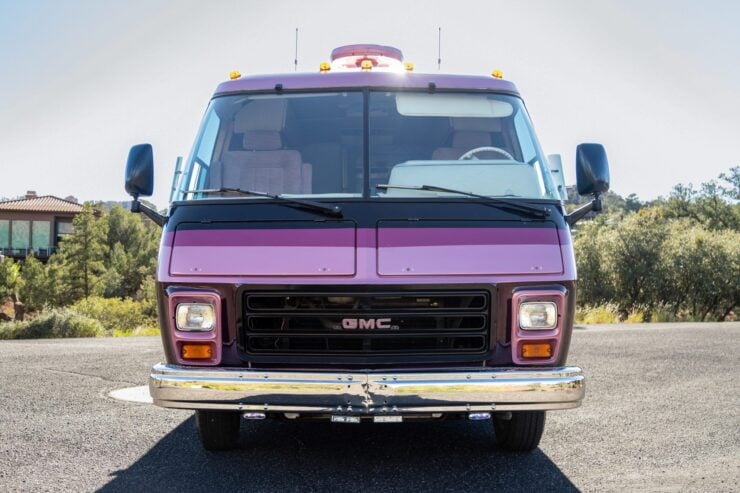
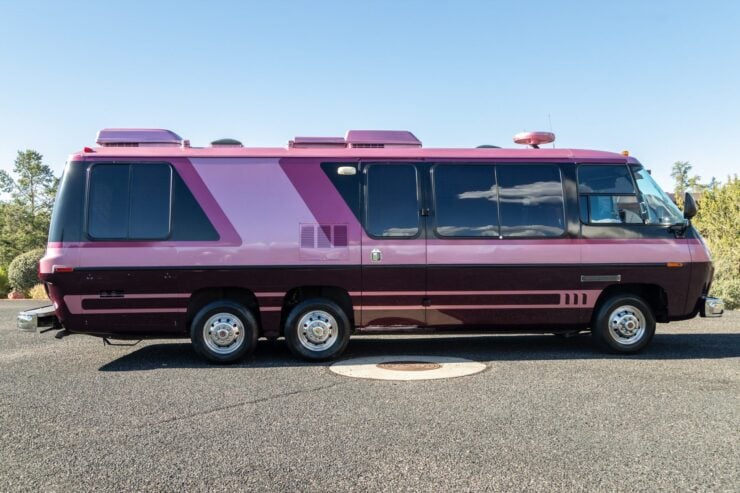
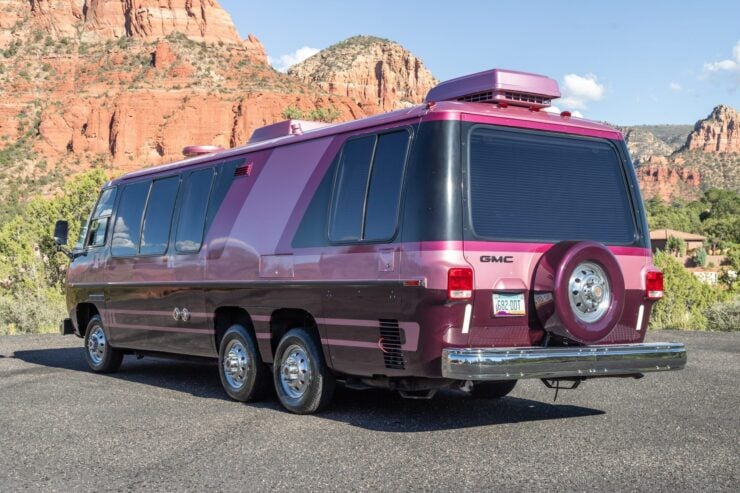
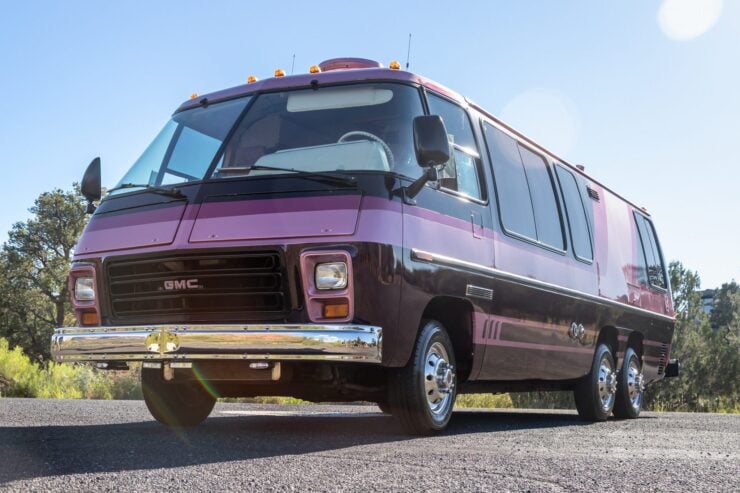
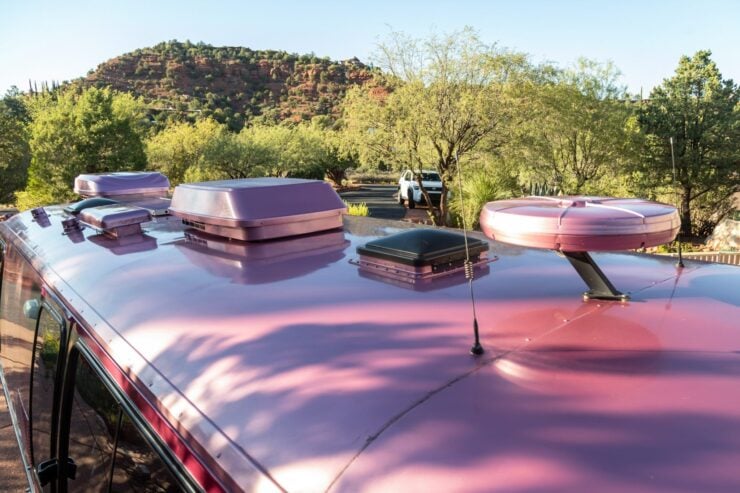
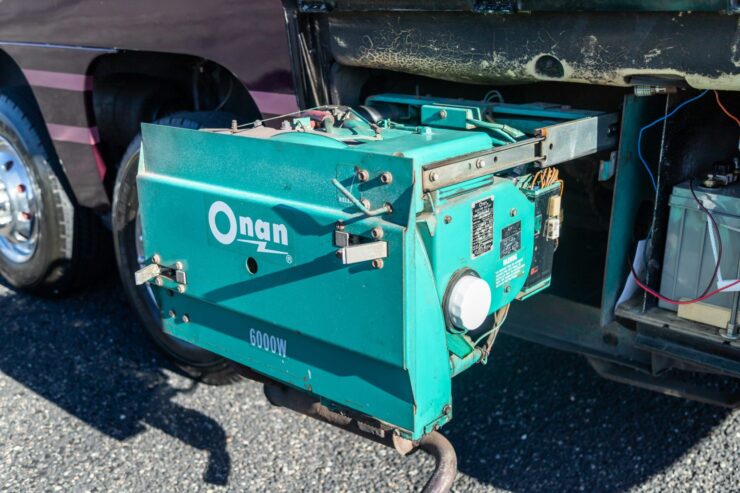
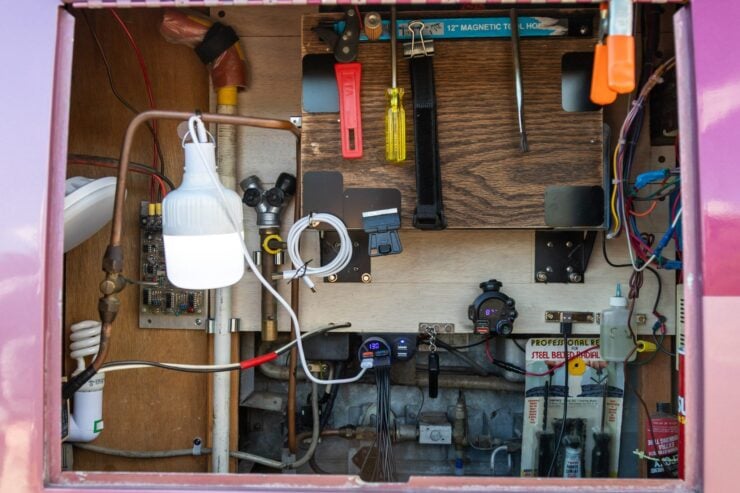



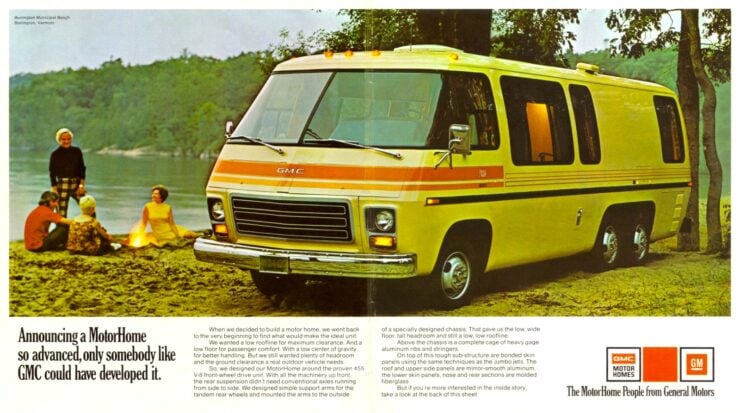
Images courtesy of Bring a Trailer + General Motors

